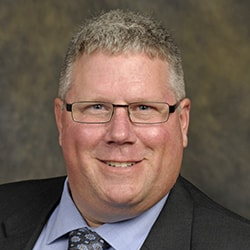Place Matters: Exploring Socio-Spatial Influences on Disaster Recovery
A special issue of GeoHazards (ISSN 2624-795X).
Deadline for manuscript submissions: closed (30 June 2022) | Viewed by 7390
Special Issue Editors
Interests: disaster equity; social vulnerability; hazard zone delineation; differential disaster recovery
Special Issues, Collections and Topics in MDPI journals
Special Issue Information
Dear Colleagues,
Over the past decade, disaster recovery processes have received increasing attention from local, state, and federal entities interested in improving community resilience in the wake of disasters. Planning for recovery presents many challenges, including (among others) how to best monitor and measure disaster impacts, how to address the needs of vulnerable populations, how different perceptions of recovery (for whom and from what) influence recovery outcomes, and how planning for recovery influences its pace and progression. Recent progress in pre-event recovery planning has enabled emergency managers, planners, and decision-makers to focus more on the process itself, including specifying desirable outcomes and tracking more recovery elements. Consideration of differential recoveries based on underlying socio-economic, physical, environmental, and cultural difference has further confounded the important task understanding the pace and progression from disaster back to ‘normalcy’. Inequities in preparedness, response, and recovery from disasters are still apparent in disaster stricken areas. Identifying how differential recoveries manifest across different hazard contexts can help us learn how to build back better and develop solutions for more equitable disaster recoveries. The aim of this Special Issue is to illuminate ongoing challenges and showcase successes in disaster recovery, especially in terms of impacts and outcomes for the most vulnerable in our society. Those manuscripts accounting for place and space are especially encouraged, but any manuscript providing new insights into diverse and differential disaster recoveries—both in terms of recovery as a process and an end point—are welcomed.
Dr. Christopher Emrich
Dr. Bradley Wilson
Guest Editors
Manuscript Submission Information
Manuscripts should be submitted online at www.mdpi.com by registering and logging in to this website. Once you are registered, click here to go to the submission form. Manuscripts can be submitted until the deadline. All submissions that pass pre-check are peer-reviewed. Accepted papers will be published continuously in the journal (as soon as accepted) and will be listed together on the special issue website. Research articles, review articles as well as short communications are invited. For planned papers, a title and short abstract (about 100 words) can be sent to the Editorial Office for announcement on this website.
Submitted manuscripts should not have been published previously, nor be under consideration for publication elsewhere (except conference proceedings papers). All manuscripts are thoroughly refereed through a single-blind peer-review process. A guide for authors and other relevant information for submission of manuscripts is available on the Instructions for Authors page. GeoHazards is an international peer-reviewed open access quarterly journal published by MDPI.
Please visit the Instructions for Authors page before submitting a manuscript. The Article Processing Charge (APC) for publication in this open access journal is 1000 CHF (Swiss Francs). Submitted papers should be well formatted and use good English. Authors may use MDPI's English editing service prior to publication or during author revisions.
Keywords
- Differential disaster recovery
- Social determinants
- Equity
- Sociospatial analysis
- Recovery planning






